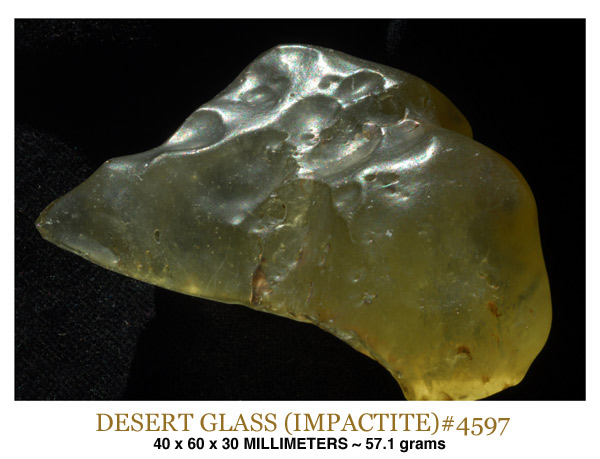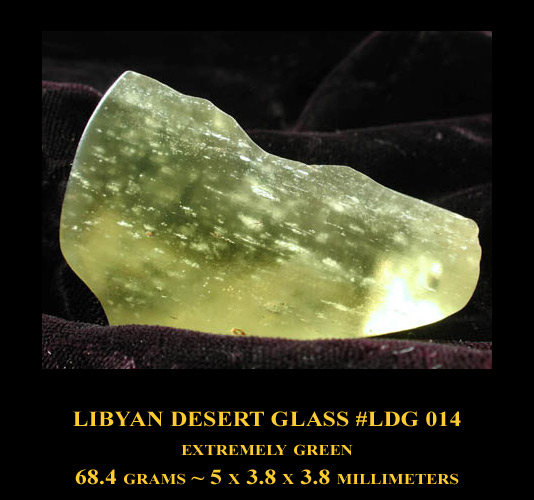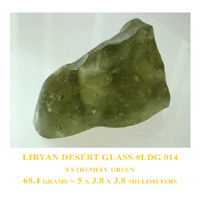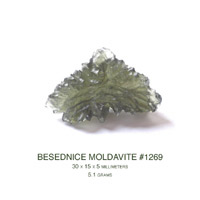- Impactites are caused by meteorites.
Meteorites are stone or metal remnants of asteroids or comets that have fallen from the sky. A Meteorite falling to earth is not unusual, but a witnessed meteorite falling is a rare event. Many times the impact and heat of a Meteor strike have been so intense that Impactites or Tektites were produced by these cataclysmic events.
An Impactite is usually slag-like or glassy, and is probably formed from rock or sand melted by the impact of a meteor. Although it is caused by a meteor impact it is not considered extraterrestial in origin, just an earthly record of the event. Libyan Desert Glass Impactites are 98% Silica, thought to be molten sandstone. Tektites are an extraterrestial/earthly combination of material from the impact site and part of the molten meteor fused together into a glassy form. The tektite Moldavite is a good example.
'Libyan Desert Glass is one of the most unusual natural glasses ever described or seen. It is almost entirely made up of silica and is dispersed over a large area of the Great Sand Sea in Egypt. Analysis of the chemical composition of several different Libyan Desert Glasses confirmed their close compositional relationship to the mature Sandstones of the Jurassic-Cretaceous era 71 - 195 million years ago. Testing results confirm that LDG's are impact-derived glasses (impactites), and have chemical features similar to Muong Nong tektites. Possible inclusions are bubbles, Cristobalite, and sometimes dark streaks, but Libyan Desert Glass can be milky from thousands of bubbles or gem quality with almost no impurities.' paraphrased from "Geochemistry and the origin of Libyan Desert Glasses" ©1997 Elsevier Science Ltd.
-
IMPACTITES + TEKTITES


 LIBYAN DESERT GLASS GALLERY
LIBYAN DESERT GLASS GALLERY LIBYAN DESERT GLASS JEWELRY
LIBYAN DESERT GLASS JEWELRY  RIZALITE TEKTITE GALLERY
RIZALITE TEKTITE GALLERY MOLDAVITE TEKTITES
MOLDAVITE TEKTITES